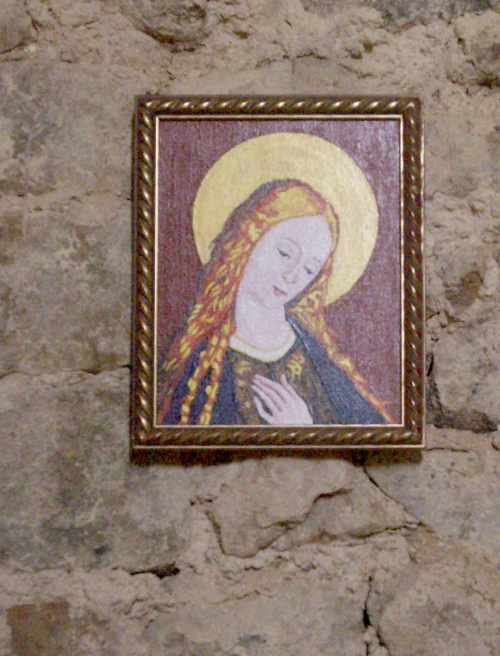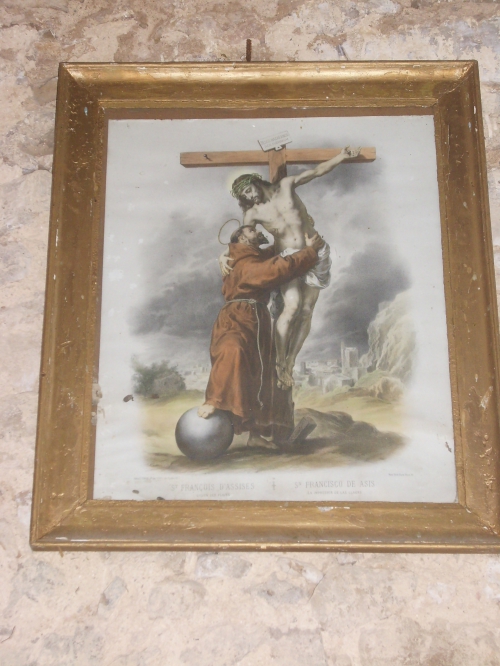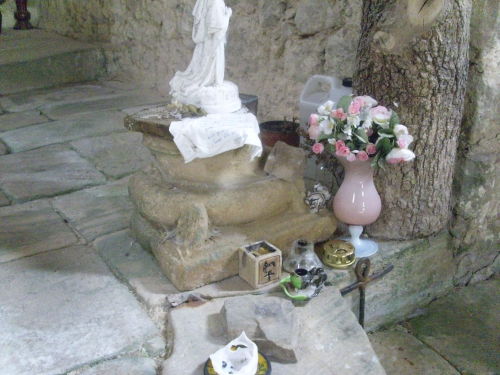St. SALVAYRE Mysterious . . .
This tiny hamlet, with perhaps three houses and two farms, is five kilometres from Alet-les-Bains, itself between Carcassonne and Limoux. The road has no number but is marked as a Cathar route on the IGN map, so it is very old. Later it joins the D40 which goes all the way to Narbonne via Lagrasse.
I remember passing St. Salvayre with some friends about 2003, on our way back to Narbonne, and we stopped to have a look at the little church, which was open.
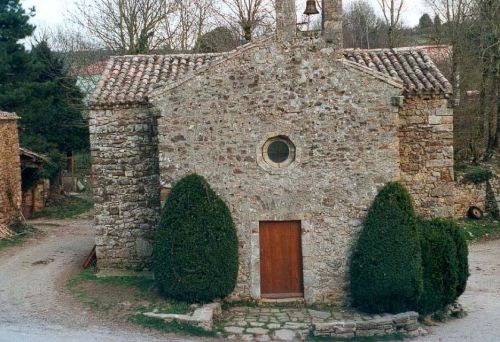
The building was in the shape of a St. Andrew’s cross, not a crucifix shape, and is nearly square. This implies it was once something else than a church. We went in. It was delightful as small village churches are in France, and well-cared for. Three of the four walls have a window high up; the fourth wall has a small round window above the door where you come in.
I took lots of photographs and when they were developed (yes, this was old Pentax days) was surprised to find one photo had an unexpected picture of Jesus appear on it!
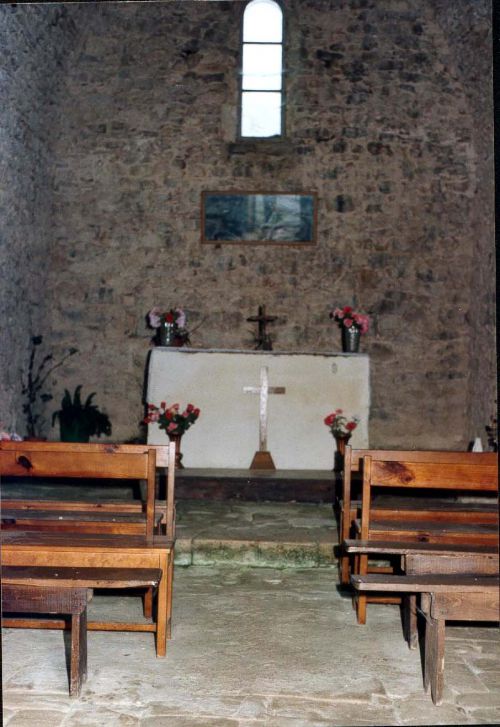
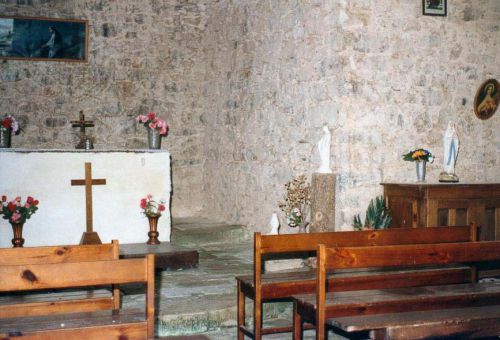
Researching this church is difficult for there are many conflicting stories. A web-site offering spiritual tours said it was a Druid church. However, the Druids did not teach or heal in buildings but in nemetons - their sacred glades in the woods where the great yearly festivals were held, on 1st November, Samain or New Year,1st of February, Imbolic or spring, dedicated to Brigid, 1st of May, Beltaine dedicated to Belenos, “the shining one” and 1st of August, Lughnasa after the amazing Celtic God called Lugh.
About a kilometre to the north of St. Salvayre church, there is a menhir or standing stone called La Pierre Droite, which is often called “The Druid Stone.” It is unusual in that it disturbs the readings of non-magnetic electronic compasses.
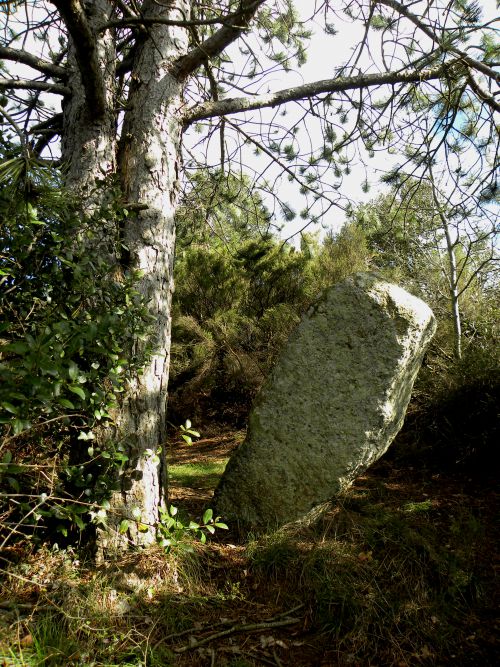
The tiny church of St. Salvayre, a French Guide to the Corbières tells me, was built from the stones of the Cathedral in Alet-les-Bains, after the Wars of Religion in the 16th century, during which the Protestants burnt the Cathedral. People point out the strange gargoyles and say they came from Alet-les-Bains. But I have a friend who has photographed the gargoyles and the “strange beasts” and says they were made by a different sculptor, others say they are 12th century, while the cathedral in Alet was originally built in 803AD.
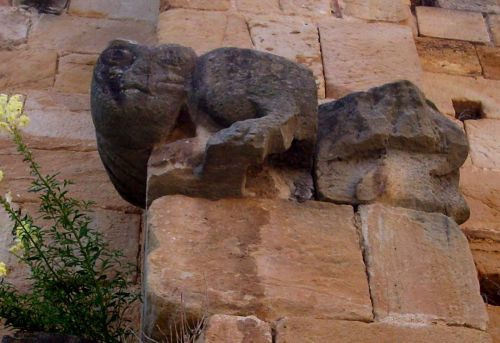
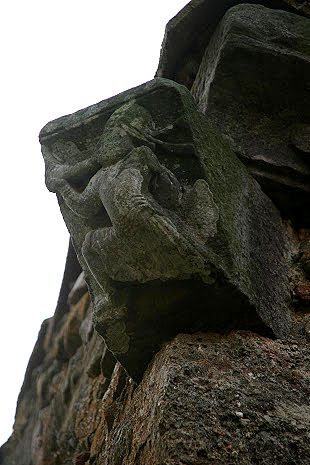
A creature at Alet, and a carving at St. Salvayre. The styles are quite different. The St. Salvayre carvings were NOT taken from the ruins of Alet Cathedral.
Why on earth would the Catholics of Alet-les-Bains build themselves a tiny church 5 kilometres away from Alet-les-Bains after the Protestants had passed? Unlikely. In fact, there was already a church in Alet-les-Bains, St. André (or Andrew) that history tells us was already in existence around 1339. It was not far from the cathedral/abbey, which was attacked in 1577, but the church was not. (St. Andre was renovated in 1866 into the church it is today.)
Of course, churches are continually renovated and re-built; but why chose this shape for a church at St. Salvayre, especially in the 16th century, when it was well established by then that all churches were built in the shape of a crucifix? The church of St. Salvayre (it means “Holy Saviour) does not face directly east-west either, although it nearly does. All this is a sure sign it was built on the foundations of an older building - a MUCH older building. I don't know why conventional Christians are afraid to agree with this.
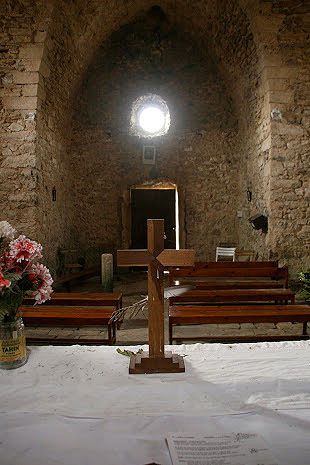
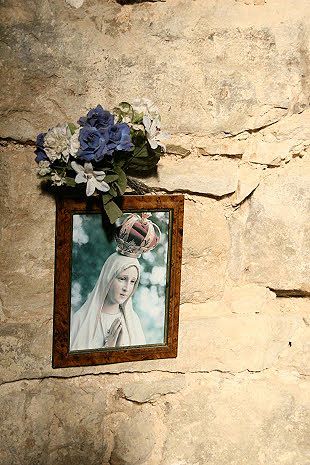
Inside the church. Photos by Myles Cummings
Some people believe the flagstones on the floor are Roman because some stones are staggered and others are not. I have studied Roman roads and buildings with my historical association here in France, this seems reasonable, my conclusion therefore, is that the original building here was a Roman “traveller’s rest” for people travelling from the high valley of the Aude towards Narbonne. It was at the top of a hill and people could rest and water their horses and find refreshment for themselves. Maybe there was a small altar there to one of the many Roman Gods, which later became dedicated to Jesus the Saviour, hence, St. Salvayre.
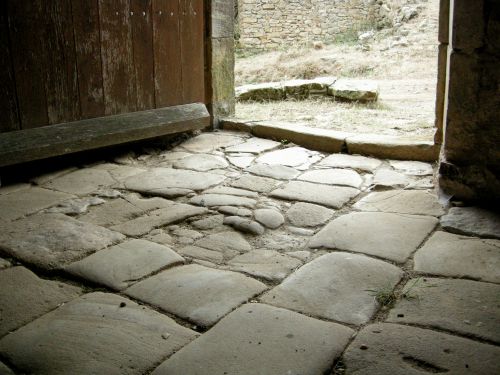
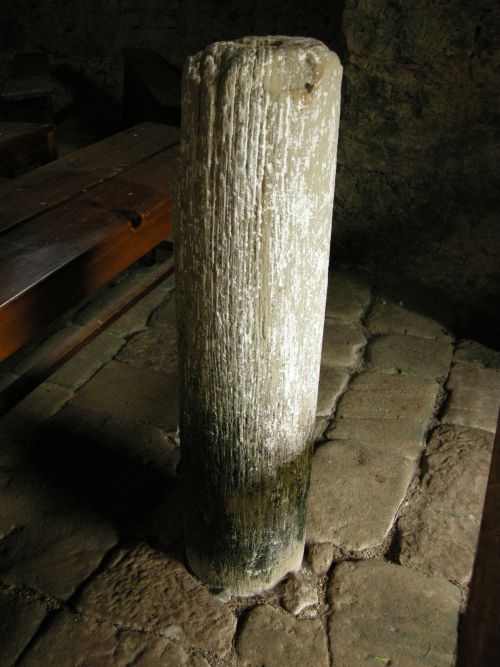
Both the floor and the pillar (possibly Celtic) embedded in it imply a Roman origin. Photos by Jaap Rameijer
The name St.Salvayre is also the name of the hamlet; this implies that the church, or the original Roman building, was there before the hamlet was. The tiny village grew up around the church. Usually a hamlet developes around an oratory or a traveller’s cross, and around this, as the hamlet developes, a church is built. While retreats, sanctuaries, hermitages and monasteries might be built miles from anywhere, ordinary churches grew up where they were needed to serve the religious populace. I could only conclude that an old Roman building was re-used and rebuilt for Christian worship.
A French friend told me that he and his friends, when they wanted to avoid the crowds, drove up to St. Salvayre to watch the fireworks at Carcassonne on July 14th - Bastille Day, when all France celebrates. I traced the line on the map that connects the ancient cité of Carcassonne with the tiny church of St. Salvayre - and then continued that line directly further south. The first place it struck was precisely the church of Rennes-le-Château.
This seems a “spooky” coincidence at first, until you remember that the Romans used to sometimes communicate messages by building fires on hilltops, especially when speed was of the essence (they had a fine courier service on the Roman trunk roads), such as to signal an emergency. This is another small piece of evidence that this building existed in Roman times.
After that first visit, I began to wonder how much exactly, the place was associated with Jesus - the name St. Salvayre means "our saviour" - and an idea started to grow in my mind.
Research on the web told me that Jesus was “buried underground in a secret cavern situated several hundreds metres” from the present village of St. Salvayre. No precise location was given (it never is!) but the place “dominated a splendid landscape.” There is a hill nearby, on the left of the road about a kilometre further, called “L’Homme mort” - the dead man. Meanwhile, another website told me that Christian Rosenkreutz, who founded the Rosicrucians, was buried near St. Salvayre - but that was in the 18th century, not in Roman times!
Certainly, other people had heard these stories and spiritual tour guides started taking people to St. Salvayre church. (It is usually open and certainly always has been when I’ve been going past, but you can check this before your visit by asking at the Tourist Office in Alet-les-Bains.) They say the church is always warmer inside than out. And people “feel things”, even the most down-to-earth people.
The altar is a huge block of solid stone, itself unusual, an altar is usually a table-top, or slab, on top of two or four pillars. People tell stories of holding their hands above this altar and feeling warmth, or energy, something so positive they don’t want to leave the church, and something which leaves their hands with strange sensations for the rest of the day.
Author Christopher Dawes said he never felt a thing inside the church, but his camera behaved strangely and his hands felt hot. Musician and Grail Hunter, Rat Scabies, laughing and joking throughout his visit, even said; “I felt sort of energised but did not know what by. I felt sort of connected, but did not know what to.”
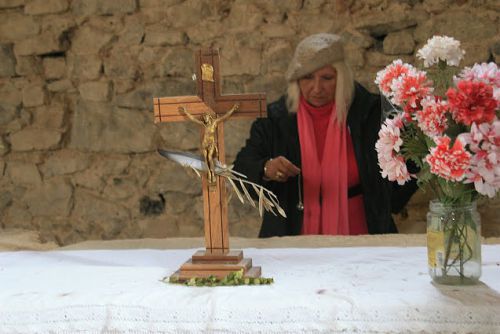
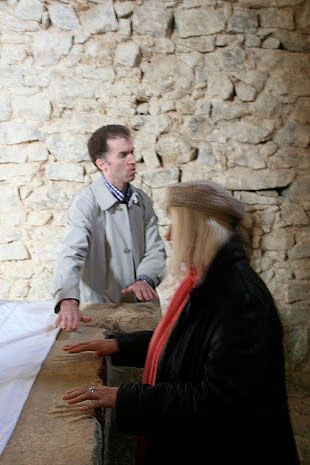
Three friends of mine went to test this, one of them a confirmed “sceptic.”
One said he felt recharged by a deep tingling, then his right hand became sore, as though it was heart-broken, he said, at being taken away from a lover or “soul friend”. Another in the party took out her pendulum, which indeed moved about; and even the third sceptic one agreed “There was strong magnetic activity as if the stone was in some way magnetised.”
Many people say that live sacrifices were performed where is now this altar and others say this church was a Roman Temple dedicated to Isis. Well, Isis was a popular Roman goddess but they had hundreds of gods and goddesses. The “live sacrifices” always suggests human victims and some sort of satanism, but the truth of the matter is probably much more ordinary.
From the small Roman altars I have seen during my archeological research with local societies in Roman houses, I would say, imagining this as a road-side traveller’s halt, the altar here would have been similar to those I’ve seen. On top would be a circular spot where maybe a bird was sacrificed and flowers or a handful of grain would be left for the favourite god or goddess of the household, for example Tutele, the God of the Hearth and/or Kitchen.
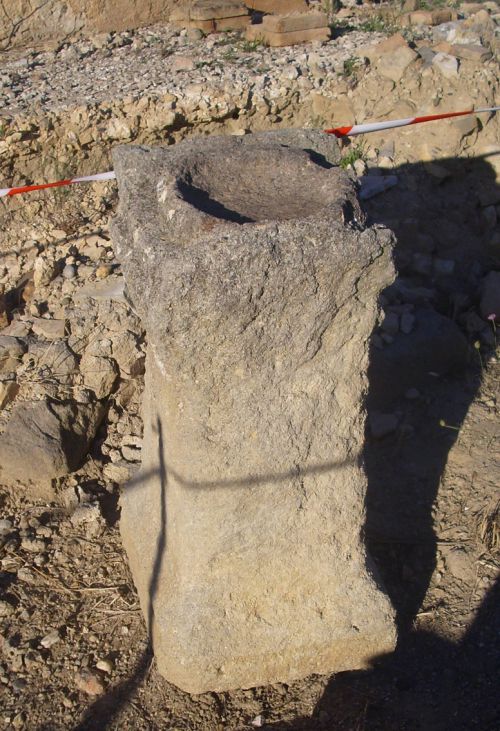 Typical Roman domestic altar, Clos de la Lombarde, Narbonne
Typical Roman domestic altar, Clos de la Lombarde, Narbonne
What has all this to do with Mary Magdalene and Jesus?
This was a Roman road and I think they travelled along it. (I don’t know why I think this but I have done since my first visit there.) They were going to Narbonne and then to Stes. Maries de la Mer to see their daughter Sarah. Sarah had married the Lord of Râtis who lived on the Oppidum with its sacred wells. Maybe she was expecting a baby. The year would have been around 49AD.
But Jesus, who had never been well since his heart was injured during the crucifixion, became ill, and died on that journey, and was buried near St. Salvayre. And Mary continued alone.
Sarah being married implies that there was a bloodline through Jesus and Mary Magdalene, but as it was through a woman it would not have been recorded and monitored.
Nonetheless, if you go to Stes Maries de la Mer, look at the local dark-skinned inhabitants. They could be the descendants of Jesus and Mary Magdalene.
In autumn 2013 I visited St. Salvayre again. There was an exhibition of children's paintings, one of which was of Mary Magdalene, and one of the old framed paintings, that I had never noticed before, was of Jesus apparently alive, being lifted down from the cross. The conventional Catholics tell me this is symbolic of St. Francis embracing the faith of Jesus, which promises eternal life, but I am not so certain.
The children had also been doing something else, for a saw this collection of things around the base of a church column - a base obviously imported from elsewhere and not part of this church.
Chinese characters, a child's toy, and an Egyptian Anke?
To see my article on Stes. Maries de la Mer - click here.
Inscrivez-vous au site
Soyez prévenu par email des prochaines mises à jour
Rejoignez les 261 autres membres

